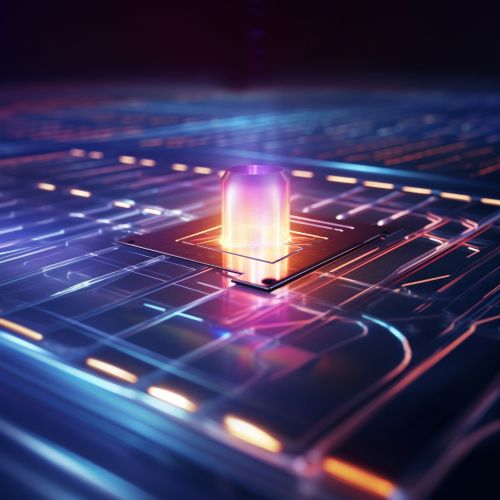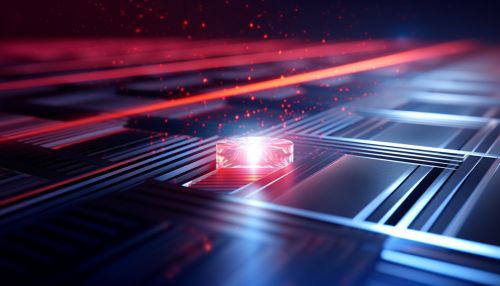The Physics of Quantum Computing with Photonic Chips
Introduction
Quantum computing represents a significant leap in the field of information technology. Unlike classical computers, which use binary bits (0s and 1s) to process information, quantum computers leverage the principles of quantum mechanics to process information in quantum bits, or qubits. These qubits can exist in multiple states at once, a phenomenon known as superposition, enabling quantum computers to perform complex calculations at a speed unattainable by classical computers.


One of the most promising avenues for the practical implementation of quantum computing is through the use of photonic chips. These chips harness the power of photons (light particles) to perform quantum computations, offering several advantages over other quantum computing models.
Quantum Computing
Quantum computing is a field of study focused on the development of computer-based technologies centered around the principles of quantum theory. Quantum theory explains the nature and behavior of energy and matter on the quantum (atomic and subatomic) level. Quantum computing uses the unique phenomena of quantum entanglement and superposition to perform operations on data.
The fundamental unit of computation in a quantum computer is the qubit. Unlike a binary bit in a classical computer, which can be either a 0 or a 1, a qubit can be both a 0 and a 1 at the same time, thanks to the principle of superposition. This property allows quantum computers to process a vast number of computations simultaneously.
Photonic Quantum Computing
Photonic quantum computing is a model of quantum computing that uses photons as the primary medium of computation. Photons are particles of light and are an ideal choice for several reasons. Photons have very little interaction with the environment, which means they can maintain their quantum state for a long time. Additionally, photons can be easily manipulated with existing technology, such as lenses and mirrors, and can be easily produced.
Photonic quantum computing utilizes the principles of quantum mechanics to process information. The quantum state of a photon can be used to represent a qubit, allowing for the implementation of quantum algorithms. Photonic quantum computers can operate at room temperature and do not require the complex cooling systems needed by other types of quantum computers.
Photonic Chips
Photonic chips are an integral part of photonic quantum computing. These chips are designed to control and manipulate photons to perform quantum computations. Photonic chips are typically made from silicon, a material that is abundant and easy to work with. Silicon also has excellent optical properties, making it ideal for controlling and manipulating light.
Photonic chips use waveguides, which are like tiny optical fibers, to guide photons around the chip. These waveguides can be used to create optical circuits, which can perform a variety of quantum computations. Photonic chips also use devices called beam splitters, which can split a single photon into two, allowing for the implementation of quantum algorithms.
Advantages of Photonic Quantum Computing
Photonic quantum computing offers several advantages over other models of quantum computing. Photons are not susceptible to many of the errors that can affect other types of qubits. Photons are also very fast, allowing for rapid computation. Additionally, photonic quantum computers can operate at room temperature, unlike many other types of quantum computers, which require extremely low temperatures to function.
Photonic chips are also compatible with existing silicon-based technology, which is widely used in the electronics industry. This compatibility could potentially make it easier to integrate photonic quantum computers with existing technology.
Challenges and Future Directions
Despite the many advantages of photonic quantum computing, there are also several challenges that need to be overcome. One of the main challenges is the difficulty in generating single photons reliably. Currently, most methods of single photon generation are probabilistic, meaning they only produce a single photon some of the time.
Another challenge is the difficulty in maintaining the quantum state of photons. While photons are less susceptible to environmental interference than other types of qubits, they can still lose their quantum state over time. This loss of quantum state, known as decoherence, can lead to errors in computation.
Despite these challenges, the field of photonic quantum computing is advancing rapidly. With continued research and development, it is likely that we will see the practical implementation of photonic quantum computers in the near future.
